History Frozen in Black and White
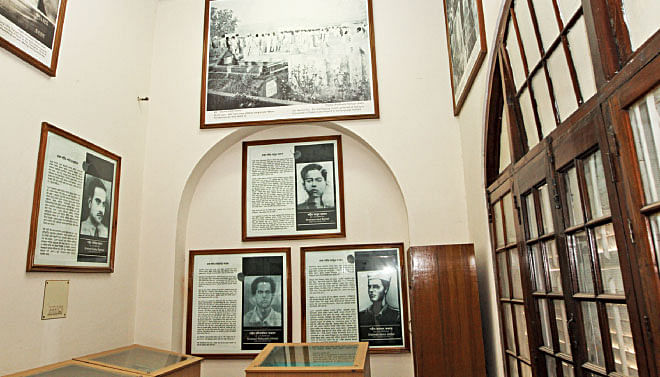
A microcosm of the Language Movement (1947-1956) that laid the foundation of the Liberation War, the Language Movement Museum is one of the few thematic museums in the country. A thematic museum is narrow in its scope of collecting, and thus it can collect more effectively. And that is definitely the case here.
As you enter, on the wall to your right you see poems written by Bengali poets from the Middle Ages like Abdul Hakim. Turn around and you will see a photo of Dhirendranath Dutta who on February 23, 1948 in the Pakistan Constituent Assembly in Karachi made a speech calling for Bangla to be made one of the official languages of Pakistan. Okay, Dutta is a pioneer of the language movement, so his photo makes sense. But why Bengali poets from the Middle Ages? What do they have to do anything with the language movement? “Well, contrary to popular belief, Bangla actually flourished during the reign of the independent Muslim Sultans (1334-1538) in the middle age (1205-1757) and during this period Muslim poets and writers created what can be called secular Bangla literature as opposed to literature inspired by religious texts such as Ramayana and Mahabharata,” says Firoz Mahmud, the museologist.
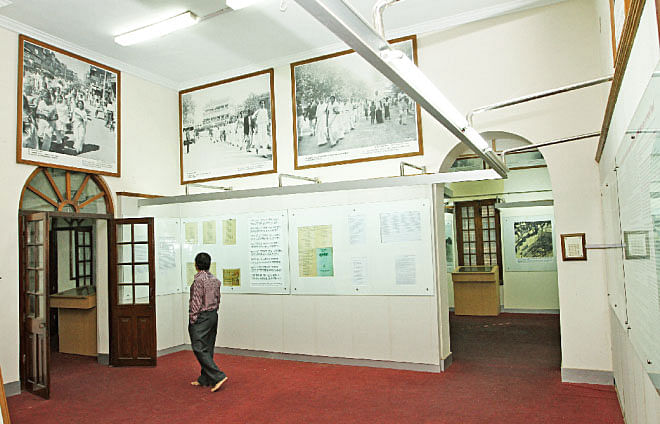
In the second room you see a coat once worn by and a bag carried by Shafiur Rahman, a martyr. There are pictures of Abdul Jabbar, Rafiq and Barkat who were shot on 21st February, 1952 and died the same day.
In the next room, you see Abdus Salam who after being shot on 21st February succumbed to his wounds on April 7. His father went to the Azimpur graveyard to find his son's grave but could not find it anywhere. Later on, employees of the hospital gave him his son's blood-stained shirt, a full sleeve T-shirt and a pajama. Salam's photo reminds you of a son who took bullets in his chest so you and I could speak without fear, and of a father who lived the rest of his days trying to make peace with the eternal sorrow of losing him.
Do you have a son or a daughter?
But why should one die for language? People learn new languages all the time when they emigrate. Children of Mexicans living in the US, for example, learn to speak English although the lingua franca of their parents is Spanish. “The language movement was about more than just the language. It was a cry to maintain our national identity,” says Dr Mahmud who is a former faculty at Indiana University, USA. He has also worked as a research consultant at the Smithsonian Institution of the United States. “In the creation of Pakistan the contribution of Bengalis was way more significant than that of the non-Bengalis. In 1946, the Muslim League won an overwhelming majority in Bengal, losing in Punjab, Beluchistan, and the North-West Frontier Province. Unless Pakistan was created, Muslims would have no future in a unified India, the elites of Muslim League convinced the Bengalis.” But from the very beginning the Pakistani ruling clique was hell bent on exploiting and usurping the majority population of the newly created state. People of erstwhile East Pakistan, resented this. Ziauddin Ahmed, Vice- Chancellor, Aligarh Muslim University, demanded in a speech that Urdu rather than Bangla shall be the state language of Pakistan and soon enough Muhammad Ali Jinnah, the founding father of Pakistan, made a similar announcement. In reply a thunderous shout of 'no' shook the very foundation of Pakistan. Shots were fired in Dhaka on unarmed students in Dhaka on the afternoon of February 21, 1952. History would show that shots were fired at the very existence of Pakistan on that day.
All that is captured in the black and white photographs in the third room. All captions are in both Bangla and English.
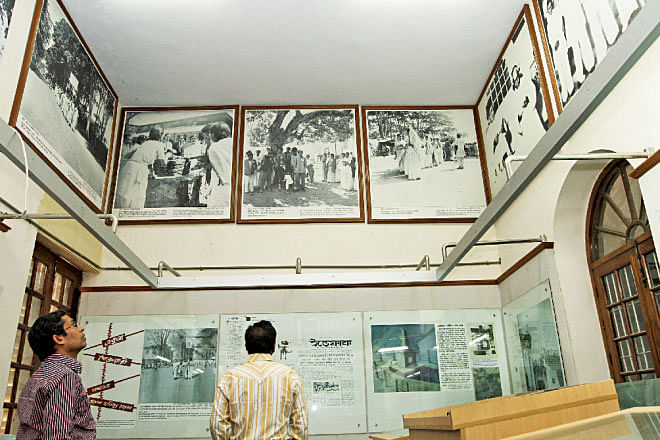
“Although displaying is traditionally a central activity of any museum, the Language Movement Museum's task does not end with it,” says Dr Mahmud. “The tangible records of human activity, which the visitor beholds as best as his/her time permits, need to be described and interpreted in greater detail than do the captions so that a deeper and more thoughtful understanding of the museum itself and its collections can be acquired subsequently. In the past the museums were viewed as repositories of tangible objects. The recent trend is to present the aspects of intangible culture through tangible objects, thereby recognising the deep-seated interdependence between the intangible and the tangible aspects of cultural heritage.”
So how can the Language Movement Museum present the aspects of intangible culture? “There are several options,” says Dr Mahmud. “Within the galleries, music and video presentation would be more effective. For films, animation and multimedia, separate halls would be more appropriate. As we do not have a separate hall, music and video presentation are obviously the best options. Two videos accompanied with music have already been produced.”
Established in 2010, by Shamsuzzaaman Khan, present Director General of Bangla Academy, the museum is in Burdwan House of Bangla Academy and is currently open five days a week.
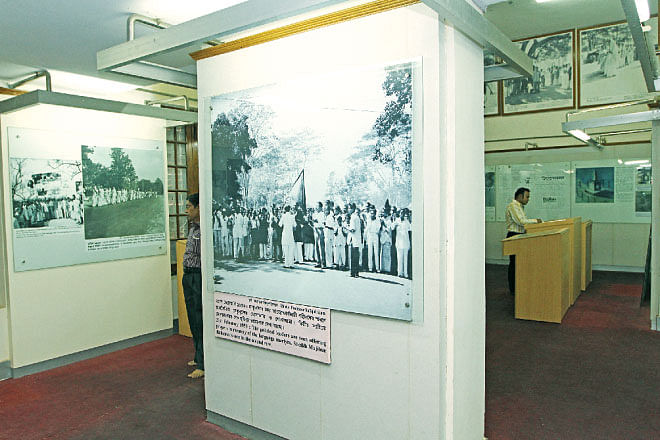

 For all latest news, follow The Daily Star's Google News channel.
For all latest news, follow The Daily Star's Google News channel. 


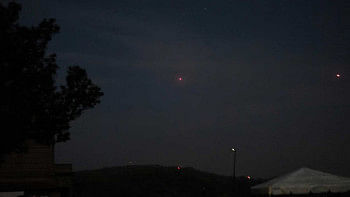
Comments